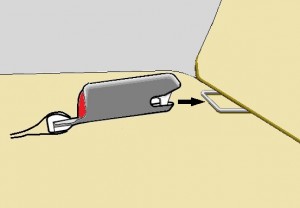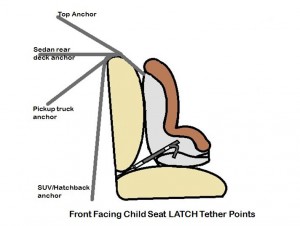Tag Archive: child safety seats
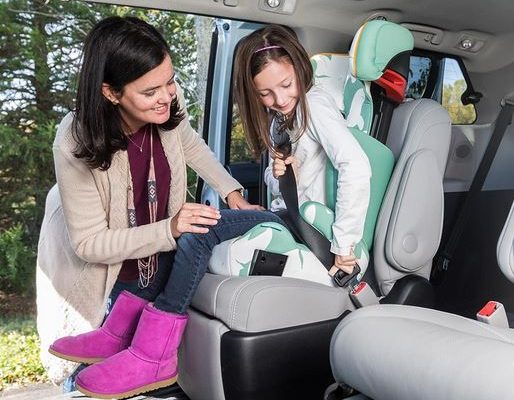
IIHS: List Of Top Child Booster Seats for 2016
November 18, 2016
If you’re a parent whose child is ready to graduate to a booster seat or a grandparent looking for the perfect Christmas gift to ensure your grandchild’s safety, the Insurance Institute for Highway Safety (IIHS) has come out with a new list of the top booster seats just in time for the Christmas shopping season
It seems that manufacturers have gotten the hint and, compared to only 25% of the seats getting a good rating in 2008, this year, 48 out of 53 new models got a best bet rating. A best bet rating means they are likely to provide good belt fit for a four to eight year old child in almost any car, minivan, or SUV.
Out of the 53 seat models tested, three seats are rated “Check Fit” meaning they may not provide the best belt fit in all makes of vehicles. Two seats, the Cosco Easy Elite and the Cosco Highback 2-in-1 DX — both made by Dorel — were rated “Not Recommended.”
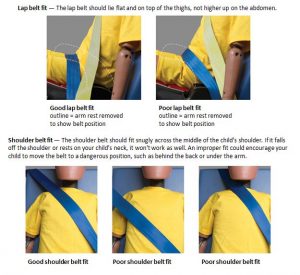
Click on image to enlarge
Parents should remember that, in spite of some state laws, booster seats are recommended for children once they outgrow their child seat, at approximately age four, until they’re big enough for a seat belt to fit properly, low on their hips, without riding up over their abdomen. For the average child that can be anywhere from nine to twelve years of age.
Another thing to remember is that child seats have an expiration date. Sunshine and trapped heat inside a car over long periods of time can degrade the plastics and synthetic fabrics used in the seat structure and belts. If you’re considering using a hand-me-down seat, you’ll want to check the expiration date located underneath the seat.
For more information, visit: Designs that click – Booster manufacturers have mastered good belt fit
Images courtesy: Insurance Institute for Highway Safety
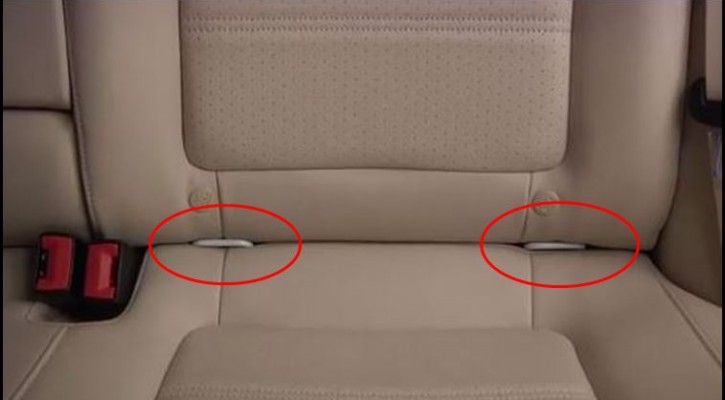
The Best Kept Secret That Could Protect Your Baby
May 12, 2016
Most parents of a newborn child would do anything they could to protect that child from harm but there’s one critically important safety device that seems to be a well kept secret for most new parents.
In 2014, the American Academy of Pediatrics conducted a study of new parents who were taking their newborn child home from the hospital. The study showed that 93 percent of new parents made at least one critical error in placing or attaching their infant car seat for the first time.
Most new parents seem to know about using the seat belt to secure an infant car seat but, it seems that very few know about or use their vehicle’s LATCH (Lower Anchors and Tethers for Children) system. The LATCH system has been required on all infant child seats and motor vehicles manufactured after September 1, 2002. While the LATCH system may be there, it’s often difficult for parents to find and use.
The LATCH system consists of tether points (as in the photo above) located both on the seat itself and, for forward facing child seats, behind the rear seat. Latches built into the infant seat or seat base are designed to hook onto the anchor points located between the seat cushions.
These tethers, once they are latched and tightened, are extremely effective in holding the child seat securely in place during a crash.
When your child is old enough for a front-facing child protective seat, there’s an additional tether to prevent the top of the seat from flying forward in a crash. The point that it tethers to depends on the type of vehicle you have.
Follow the directions that came with your child seat when attaching the LATCH points. If the child seat user’s manual is unavailable, you can generally find a user’s manual online at the child seat manufacturer’s website.
If you’re still unsure about how to correctly install your child seat, you can contact the local child seat inspection station where a trained child seat inspector can show you how to correctly install the seat.
Always place your baby’s child seat in the rear seat but keep in mind that, in certain crashes, the front seat can break, fall back and possibly injure the child seated behind. If possible, always place the child seat behind an empty front seat or behind the lightest front seat passenger.
Another thing that seems to be a secret is that car seats have expiration dates. Plastic seat components exposed to the sun and heat in the interior of a car over long periods can start to break down and weaken. The expiration date is marked on the bottom of the seat. If a previously used seat is near or past its expiration date, dispose of it. Don’t be tempted to sell it at a garage sale where it could endanger another child.
If you’re in the market for a new car, the Insurance Institute for Highway Safety (IIHS) has information on the safest cars and those cars with the easiest to use LATCH systems.
Be sure to register your new car seat in case problems arise that require a recall. To check whether or not your car seat has been recalled, visit: Get Car Seat Recall Notices
For the sake of your child, and others, don’t let the proper use of child seat systems remain a secret; spread the word. For more information visit: Lower Anchors and Tethers for Children (LATCH) Restraint System

A Christmas Gift For Safer Driving
December 8, 2015
If you’re looking for Christmas gift for someone who’s hard to buy for, you may want to consider a gift that’ll contribute to their safety on the road. It’s a gift that says “I love and care about you” and it’s practical at the same time. Here are some gifts you might want to consider, especially for those who have small children.
Backup cameras
Backup cameras are a great gift for someone who has small children or may drive and park in areas, such as schools, where small children may be present. Backup cameras eliminate blind spots in the rear and give the driver a full view of the area directly behind the vehicle where small children are easily missed. Backup cameras are very economical and can be easily installed by someone with minimal mechanical skills. For more info visit: https://youtu.be/Z2DEanjr7ZE?t=145
Child seats
If you know someone who’s expecting or whose child may be outgrowing their car seat, this can be an excellent gift. Remember that child seats have an expiration date and parents should avoid getting a used car seat for their child. Exposure to the sun and heat in a car over time can cause the synthetic fabrics used in the belts to wear down and become weak.
For newborns, get a rear-facing car seat.
Convertible seats can be used as rear-facing seats for newborns and can then be shifted to face forward for toddlers.
Children are often graduated to seat belts way too early and that’s dangerous for them. For toddlers who’ve outgrown their car seat, get a booster seat that will allow the child’s seat belt and shoulder harness to fit properly. Kids should stay in booster seats until they’re at least 4’9” tall.
For info on the best car seats, visit: http://www.consumerreports.org/cro/car-seats.htm
For info on the best booster seats, visit: http://www.iihs.org/iihs/sr/statusreport/article/50/9/1
Tires
Everyone needs a new set of tires now and then. If you’re wondering whether or not it’s time to get a new set of tires, do the Abe Lincoln test. Take a penny and with Abe Lincoln’s head showing, stick it head-first between the treads. If you can see the top of Abe’s head, the tires are worn too low and need to be replaced.
Dash cams
While they don’t really directly contribute to driving safety, a dash cam can help a driver prove who was at fault in a crash. That can save a lot of money and heartache over the long run. Dash cams have come way down in price and are easy to install. Make sure you get one with enough memory capacity to cover a long period. Get one with an impact detector that will save the file after it feels an impact. You can also get a combination dash cam and backup camera that uses the rearview mirror as a screen. For more info, visit: http://www.cnet.com/videos/car-tech-101-dashcams/
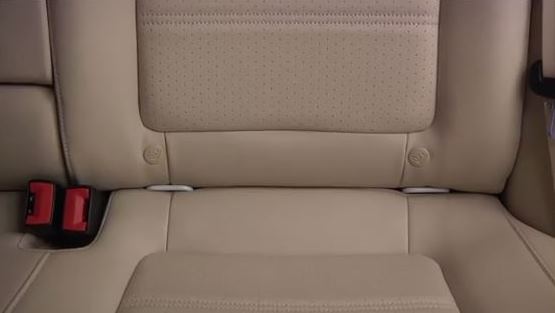
IIHS Rates Child Safety Seat LATCH Mechanisms
June 25, 2015
The Insurance Institute for Highway Safety (IIHS) has come out with a rating list of child safety seat LATCH mechanisms. LATCH (Lower Anchors and Tethers for Children) systems, which have been required equipment on passenger vehicles since 2002, are supposed to make it easier for parents and caregivers to safely install child safety seats. In this first review of LATCH system ease of use, few cars made the grade.
LATCH systems consist of anchor points low on the seat and tether points on the back of the seat. Research shows that child seats installed with LATCH, rather than with vehicle seat belts, are more likely to be installed correctly. Whether or not parents use LATCH correctly depends on the attachment point’s visibility and ease of access.
According to an American Academy of Pediatrics study in 2014, 93 percent of new parents taking their newborn home from the hospital for the first time made at least one critical error in placing or attaching their infant car seat. LATCH systems are supposed to make that process easier but, according to the IIHS, most cars LATCH systems are difficult to find or are difficult to reach making it more difficult to attach car seats.
In conducting their study, the IIHS looked at five different criteria for a vehicle to receive a “good” rating:
- The lower anchors are no more than 3/4 inch deep in the seat bight.
- The lower anchors are easy to maneuver around. This is defined as having a clearance angle greater than 54 degrees.
- The force required to attach a standardized tool to the lower anchors is less than 40 pounds. (The tool represents a lower connector of a child seat, though the actual force required when installing a seat varies depending on the specific connector.)
- Tether anchors are on the vehicle’s rear deck or on the top 85 percent of the seatback. They shouldn’t be at the very bottom of the seatback, under the seat, on the ceiling or on the floor.
- The area where the tether anchor is found doesn’t have any other hardware that could be confused for the tether anchor. If other hardware is present, then the tether anchor must have a clear label located within 3 inches of it.
According to the IIHS, out of 102 models tested, only three models received a good rating; they are:
- BMW 5 series
- Mercedes-Benz GL-Class
- Volkswagen Passat
Out of the rest of the models tested, 44 were acceptable, 45 were marginal, and 10 were rated poor.
To read more and to view all of the models and their LATCH ease of use ratings, visit: IIHS launches ease-of-use ratings of LATCH hardware in vehicles
For information on choosing and installing the right car seat for your child, visit: Parents Central
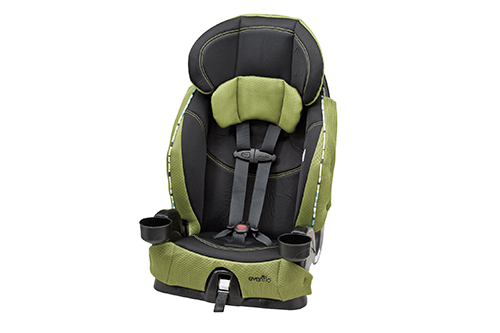
NHTSA Wants Parents To Register Their Car Seats
December 3, 2014
After several recalls of child car seats, both voluntary and those ordered by the National Highway Traffic Safety Administration (NHTSA), NHTSA is urging parents and caregivers to register their car seat and to sign up for recall notifications.
To register your child’s car seat you can visit the NHTSA car seat registration website. Once there, you can plug in the manufacturer and model type and you will be directed to the registration page for that car seat.
You can also register on the NHTSA recall notification website. From that page, you can not only request to be notified for car seats but also your vehicle, tires, motorcycles, and more. If NHTSA orders a recall on any of these products, you will be notified by email.
Read more: NHTSA campaign urges caregivers to register their car seat

